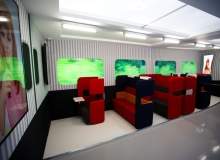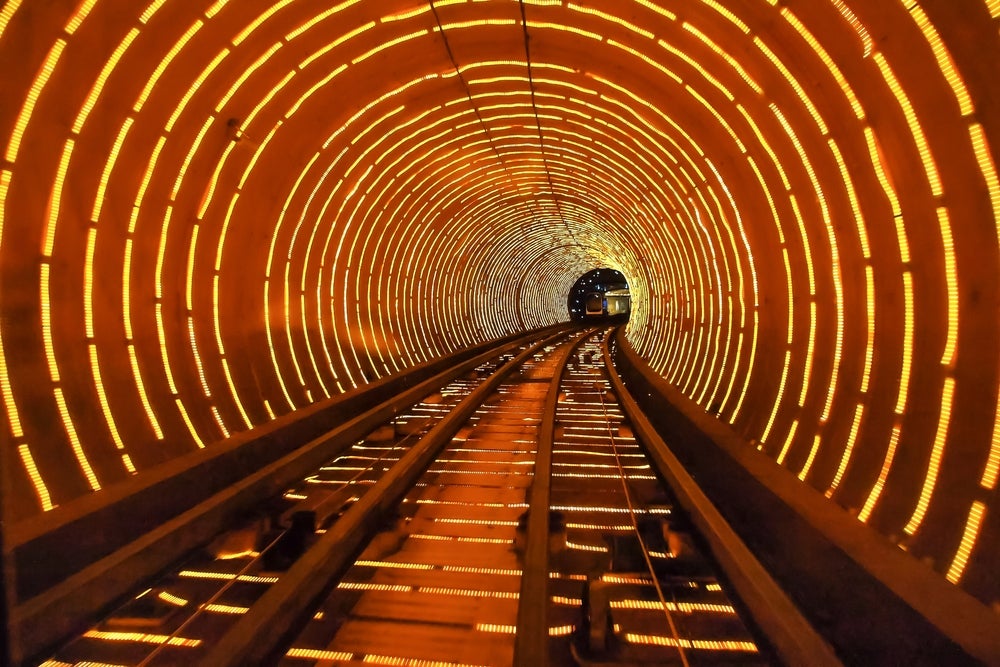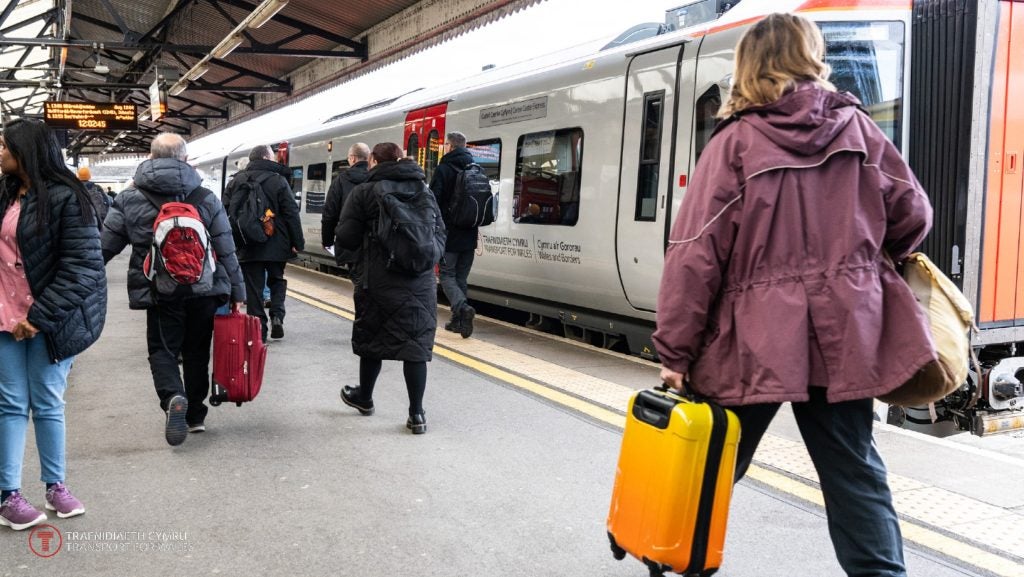

From smartphones and tablets to high-definition TVs and home appliances, Samsung is one of the world’s most established consumer electronics companies. But as the technology sector continues to find new ways to link devices and services, and the Internet of Things gradually transforms from a buzz-phrase into a defining concept of our connected era, the company is starting to think bigger.
As consumer connectivity grows – and with around 75% of transport users in the UK owning a smartphone, it is certainly growing – Samsung executives have come to realise that creating a great piece of kit is no longer enough. To survive and thrive in today’s tech business, the emphasis is shifting from simply developing great products to partnering up with data and communications experts to work out how hardware can support the kinds of linked-up, personalised experiences that consumers are increasingly coming to expect.
From hardware to full service
"This isn’t necessarily us going to organisations and trying to give them a hard sell on technology, or just coming along and telling people ‘We want to sell you a bunch of screens,’" says Graham Long, vice president of Samsung’s UK business and enterprise division. "Increasingly, what organisations are saying to us is they’re expecting us to help them address their challenges with the technology that Samsung provides."
Long was speaking to Railway Technology at Samsung’s second annual Futurescape event, the focus of which was the company’s expansion into the business-to-business (B2B) market. Having established a firm presence in consumer electronics, Samsung is increasingly looking to crack into B2B, working with other enterprises to find out how Samsung’s core technology can support the provision of new, connected services for customers.
See Also:
Along with demonstrations of various smart tech concepts at Futurescape 2014, the company also commissioned IT and telecoms analyst Ovum to create a white paper entitled ‘Next-generation transport experience’, outlining how new IT concepts can help transport providers move towards a "new, information-enabled, frictionless transport experience".
How well do you really know your competitors?
Access the most comprehensive Company Profiles on the market, powered by GlobalData. Save hours of research. Gain competitive edge.

Thank you!
Your download email will arrive shortly
Not ready to buy yet? Download a free sample
We are confident about the unique quality of our Company Profiles. However, we want you to make the most beneficial decision for your business, so we offer a free sample that you can download by submitting the below form
By GlobalDataTo that end, the company’s UK division has assigned a team of 120 to work on its enterprise and infrastructure offerings and expects around $1bn of its UK revenues to come from this segment in 2014, leading up to a longer-term goal of B2B bringing in a quarter of the company’s overall revenues by 2020.
The Detector system pioneered by Spanish firm AWAAIT employs artificial intelligence algorithms to identify fare dodgers.
Facilitating smart transport
While Samsung is targeting a wide range of applications for its tech, transport infrastructure provides an enormous canvas for improvements using data and smart technologies, whether that’s developing intelligent e-ticketing services, tracking passenger data to prioritise infrastructure spending or improving the customer experience with an adroit social media strategy. Having previously worked with Network Rail in the UK, Deutsche Bahn in Germany and others, Samsung finds itself in a strong position to build on those relationships.
And for Ovum’s consulting director and lead analyst Adrian Drury, transport providers need to team up with tech partners to pursue these avenues with some urgency, lest they get left even further behind by third-party data masters like Google or agile start-ups like KickMap.
"Why traditional industries need to work with technology businesses like Samsung is to enable those guys to be able to both play with companies like Google, and develop their own services," Drury says. "That enables a symmetrical ‘frenemy’-style relationship, rather than one where, because a traditional industry doesn’t have that technology partner, they’re not even within their sphere of influence."
With its big push into the B2B market – and the sizable accompanying PR drive – Samsung is making it abundantly clear that if transport providers need a partner to take advantage of data-driven innovations, it wants to be that partner.
What is the ‘frictionless experience’?
The ‘frictionless experience’ was a recurring theme for Ovum and Samsung’s vision of connected travel. Drury is keen to explain that this is more than marketing fluff. "Fundamentally you are providing passengers better real-time information about where they’re going, which particular direction to get on and also the ability to respond to unpredictable events in real-time," he says. "And then for you as a transport service provider, to make better, smarter decisions in real time about how you’re using your assets, where you’re putting your assets and how you’re running your network. That’s what we mean by the frictionless transport experience."
Cloud-based data storage enables the sort of operational flexibility that makes transport networks less dependent on centralised, proprietary systems. "You can virtualise the whole lot," says Drury. "You don’t need have one massive facility with everything on-site and a whole bunch of proprietary kit. Everything’s off-the-shelf, it’s cheaper, it enables your people to work more remotely; they can get out of the actual control room and on to site."
From the passenger’s point of view, the smartphone and its near-ubiquitous presence in pockets up and down the UK is the foundation and driving force for this frictionless innovation. Ovum’s white paper described smartphones collectively as "the world’s most powerful sensor network", a digitally connected hive-mind that feeds an endless stream of data to rail operators. Actually tapping into that data-stream is easier said than done, no matter how easy Google makes it look. But social media is a good place to start; turning a complaint into an open dialogue is especially relevant for a sector like transport, where frayed nerves are an everyday occurrence.
"[With] unhappy travellers, so many of their issues could be solved with clear, timely communications," says Philip Oldham, head of marketing at Samsung’s enterprise business team. "So the use of the technology by travellers, the fact that they’re always connected, means that the railway operators can get messages to them to say, ‘We’re really sorry, there’s been a delay for this reason, this train’s going to be 20 minutes late, there’s an option for you’, and so on. That will also help make people’s travel experiences so much better."
Drury agrees. "There are many examples of frankly brilliant customer service being delivered, particularly by airlines today, where they’ve taken on a negative comment on a social platform, and they’ve turned that into an opportunity for that individual to actually become an advocate for those brands," he says.
Location-based services
Tying data to a physical location is becoming increasingly common on rail networks, especially the tracking of passengers’ entry and exit points using contactless ticketing systems like London’s Oyster card. But as the industry moves closer towards that frictionless horizon, these benefits will increasingly come to be integrated into a single smartphone device or tablet.
Near field communication (NFC) is, says Oldham, a "tried and tested" technology that is "on the tipping point" of wider use as a smartphone-enabled ticketing system. Indeed, several variants of Samsung’s Galaxy series of smartphones are NFC-enabled and are already capable of being used as ‘digital wallets’, so the broader implementation of smartphone-based ticket payment and validation seems just around the corner.
And around the next corner lies Bluetooth Low Energy (BLE), a version of Bluetooth communications that uses far less of a smartphone’s battery power and enables location-based data transfer with far greater accuracy, allowing, for example, train schedule information to be pushed to users based on their movement through a station.
Integrated wireless connectivity is revolutionising the way rail operators interact with passengers and rail vehicles.
"You can have a little beacon – you can stick it on something, it’s battery-powered so it doesn’t have to be hard-wired – that emits a little pulse that tells the device exactly where it is down to a matter of centimetres," says Drury. "That ability to do location identification means that you can provide a service down to the same level of granularity. As a service provider, I could provide a different service to you sitting there than to me sitting here. When that makes the difference between you moving through a gate or me moving through a gate, that’s very important."
The improved accuracy of BLE also allows for appropriate and potentially lucrative location-based marketing – for example, if a coffee shop chain knows a customer is just outside a branch on a station concourse, it can push a discount code directly to that customer, encouraging him or her to stop in.
Of course, this increased contact between enterprises and consumers via smartphone communications raises the spectre of digital privacy. Consumers are generally happy with the value proposition of sharing basic data in return for improved service, but you only get one chance to get that proposition right. For Long, Samsung’s place is providing the technology to allow positive interactions between businesses and their customers, and the responsibility for how this tech is used must fall on the individual business or transport operator.
"We see this more and more in terms of the large enterprises we work with – everybody increasingly understands the importance of trust," says Drury. "Consumers are increasingly savvy as well, about which businesses are pushing the boundaries and which aren’t. But certainly the large businesses that we speak to are very savvy to this, and they will always err on the side of conservatism."
The future: partners in data
Samsung seems to understand that its primary role as a hardware provider means that the company can supply the core technology to make these kinds of connected services possible, but it will need to reach out to data specialists to make that hardware fly in new data-driven applications.
"What’s critical is for us to continue to work with those third-party organisations that are going to enhance the experiences out there," Long says. "So we have a very good relationship with Google, and numerous third-party organisations. We make great technology; everybody knows that. But what turns that great technology into something that’s outstanding is the third parties that we’re working with to turn this into a reality."
As for the specific partnerships that Samsung is building to introduce these customer-focussed, connected transport experiences to rail networks, Long is understandably cagey. But he remains confident that in a consumer-driven market, seamlessly connected tech is the best way to address our ever-growing needs.
"What you will see from us over the next 12 months is that we will increasingly work with those partners that are relevant in the industries in which we want to be," he concludes. "The one thing we all have to keep reminding ourselves is that a lot of the change that is happening now is being driven by us as consumers, not by organisations doing something that is driving the market. We are incredibly demanding now – we want to be productive, we want to have our downtime, and we want to make sure that we get the balance right. Technology allows us to do that."







